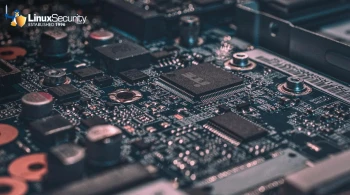Linux admins,
Linux admins use tools like gpg and OpenVPN to secure data for our users. We also have a responsibility to protect the privacy of our users, including following state and federal regulations. Ensuring explicit user consent for collecting, storing, and using biometric data is essential to avoid legal issues. As AI development continues with fewer federal restrictions,
Linux admins must also adopt robust privacy measures for data processed by AI models. Read on to learn more about navigating the complex and fragmented state and federal laws and how to manage AI privacy risks.
I'll also share expert tips to keep your kernel secure.
Please share this newsletter with your friends to help them gain critical Linux security insights. Is there a Linux security-related topic you want to cover for our audience? We welcome contributions from passionate, insightful community members like you!
Yours in Open Source,

Dave Wreski
LinuxSecurity Founder
A Linux Admin's Guide to Ensuring Data Privacy in 2025
In 2025, we Linux security admins face new challenges brought on by growing data privacy concerns that demand increased attention to detail and strict compliance. The rise of biometric security—a powerful tool for authentication—also brings significant risks if not managed correctly. Look no further than the high-profile troubles of Bunnings Group and White Castle, where failures in obtaining explicit user consent for biometric data collection led to legal and financial repercussions. Ensuring transparent, consent-based data collection practices is key to avoiding similar pitfalls. Further, the lack of unified federal data privacy legislation means admins must navigate a patchwork of state-specific laws from places like Delaware, Iowa, and New Jersey. Staying updated and compliant with these diverse regulations is crucial. Additionally, with AI development continuing unabated following the rollback of federal restrictions, it's imperative to adopt robust data privacy measures to protect sensitive information processed by AI models. Proactive security measures and vigilant compliance practices are increasingly essential in this fragmented regulatory environment, and data privacy must be a priority for all Linux security professionals. Let's examine common data privacy concerns and practical measures for improving data privacy in 2025 and beyond. |
A Sysadmin's Guide to Securing the Linux Kernel
With the support of the open-source community and a strict privilege system embedded in its architecture, Linux has security built into its design. That being said, gone are the days when Linux system administrators could get away with subpar security practices. Cybercriminals have come to view Linux as a viable attack target due to its growing popularity, the valuable devices it powers worldwide, and an array of dangerous new Linux malware variants that have emerged in recent years. It has become apparent that most attacks on Linux systems can be attributed to misconfigurations and poor administration - and failure to properly secure the Linux kernel is often at least partially to blame. Kernel security is a key determinant of overall system security, as the Linux kernel is the foundation of the Linux OS and the core interface between a computer’s hardware and its processes. Luckily, the Linux kernel possesses an assortment of effective built-in security defenses - firewalls that use packet filters built into the kernel, Secure Boot, Linux Kernel Lockdown, and SELinux or AppArmor - that administrators should take full advantage of. Let's examine the importance of robust kernel security and explore various measures you can take to secure the Linux kernel and protect your systems from malware and other exploits. |















